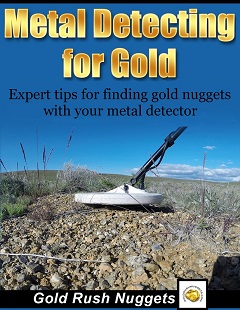
While ore was being assayed from the Murchison copper and lead deposits in 1848, gold was discovered in Western Australia for the first time. Four years later prospectors found fairly rich gold-bearing ores in the eastern areas, but it was difficult to trace the exact locations. Gold in quartz was found in the Murchison district in 1854 in Bowes River. Some rich areas of gold-bearing quartz was discovered in 1861 near Northan, and a 14 ounce nugget ws found in the Pilbara in 1882.
Gold was found nearly everywhere in Hall’s Creek, and the Ord, Margaret and Elvire Rivers in 1885. These waters are all located in the Kimberley area, which triggered the Kimberley Gold Rush in in 1886. One year later gold discoveries in Central Yilgarn Craton and the Shire of Yilgarn inspired the Yilgarn Gold Rush in 1888. The principle mines in the area were Marvel Loch Mine, Big Billy Copper-Gold Prospect, Fraser’s Mine, the Yarlarweelor open pit mine and many diggings around Kanowna, as well as the Copperhead Mine at Bullfinch.
In the north west of Kollyanobbing, Mt. Jackson was prospected, and Mt. Manning yielded gold as well. In 1887 gold was recovered at Pilbara and Mallina Creeks. Subsequent gold fields were established at Ashburton in the Pilbara region and the Shires of Yalgoo in the Murchison district, and some large gold nuggets were found there.
In July of 1891 in the Mt. Magnet region some very rich alluvial deposits were developed at the Poverty Flats and the Hill 50 Mine, which is Australia’s deepest gold mine. The Murchison Gold Rush occurred in 1891 at the town of Cue. Even today, Cue and Meekathara, located in the Gascoyne-Murchison area, are popular areas for prospecting, primarily metal detecting.
The Coolgardie Goldfield was discovered in 1892. The Bailey’s Reward gold mine was to become one of Western Australia’s richest mines, and in May of 1893 Goongarrie produced alluvial gold deposits. One hundred ounces of alluvial gold was recovered the following June at Mount Charlotte. When that claim was registered, the town of Kalgoorlie was founded. Most of the rich gold deposits of this area has been pretty well worked out.
In 1902, the Great Boulder Mine was producing payable gold 1500 miles below the surface. The area which became known as the Golden Mile, became one of the world’s richest gold producing areas.
Norseman showed gold in August of 1894 and became the second richest goldfield in Western Australia. The Norseman Mine is the longest operating gold min in Australia, and Norseman is a small town today, supported primarily by tourism and mining.
The goldfields of Western Australia have produced some of the largest nuggets ever found, and has produced gold continuously since its initial discovery. Nuggets can still be found today. The largest nuggets found in Western Australia are: Golden Eagle, 1136 troy ounces; Ausrox, 23.6 kg; Golden Stonefish, 7.056 kg; Normandy Nugget, 819 troy ounces.
To find gold today, look in the places where gold was found in the past, because it has not all been recovered. Get out there and look – maybe you’ll find one of the big ones!
Next: The 3rd Largest Gold Nugget found in W. Australia

